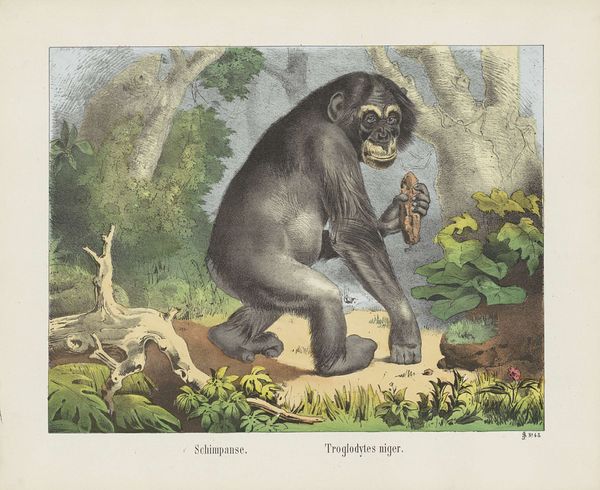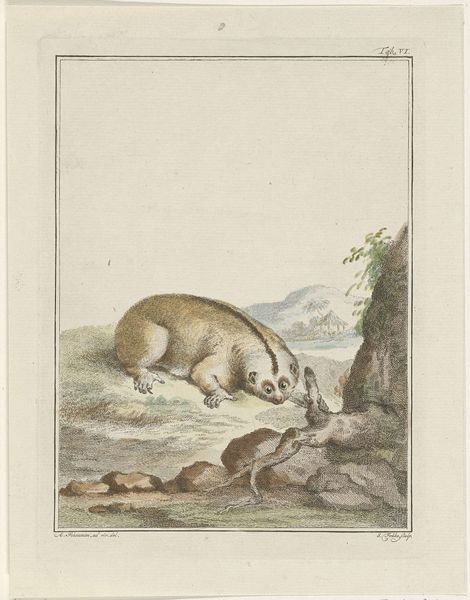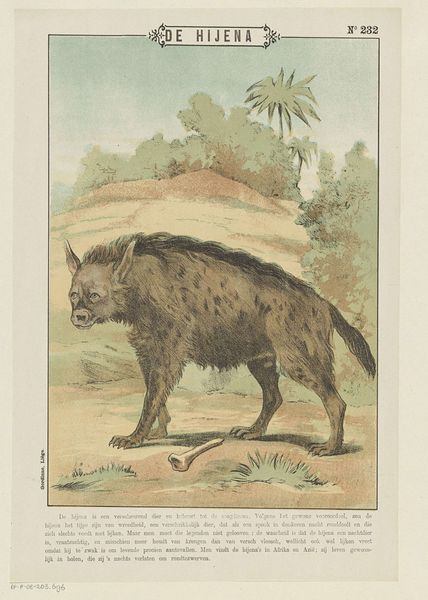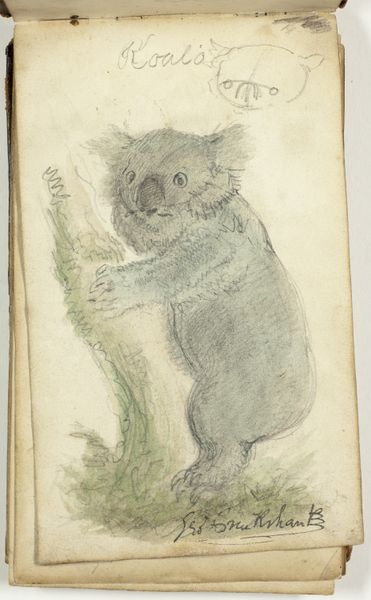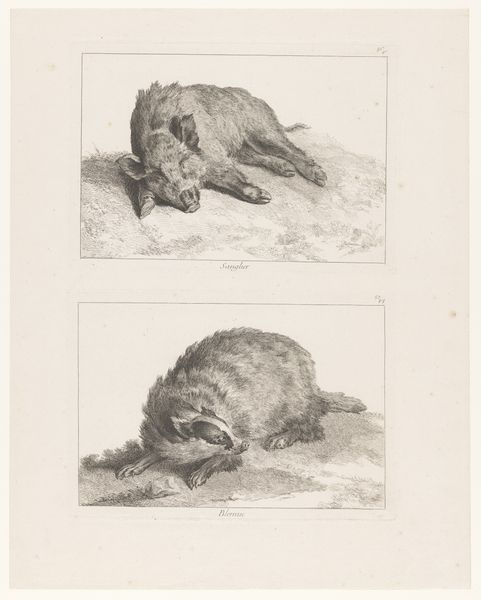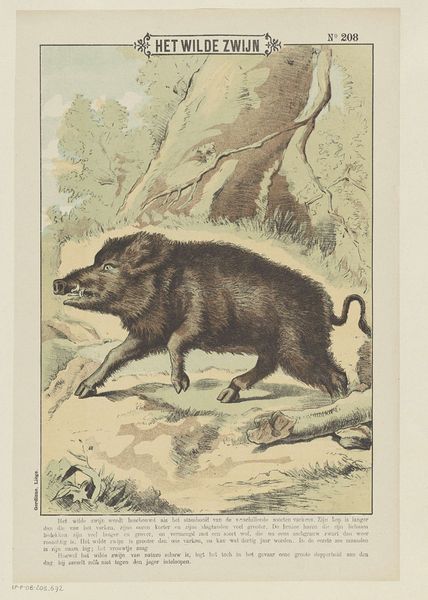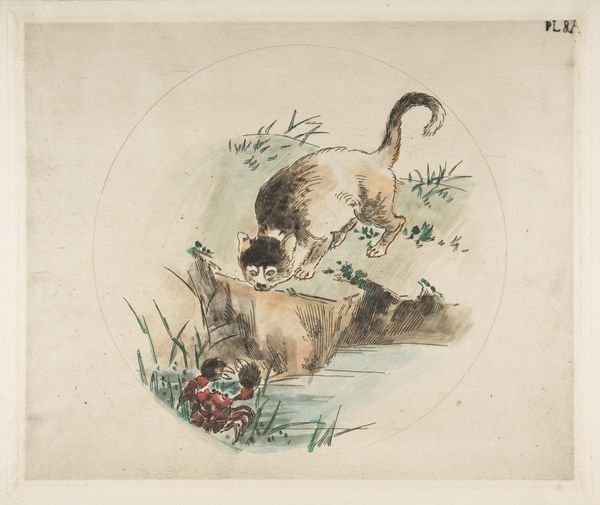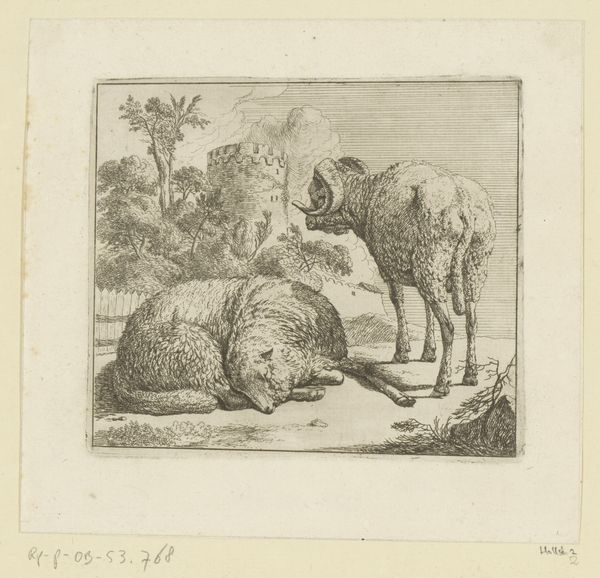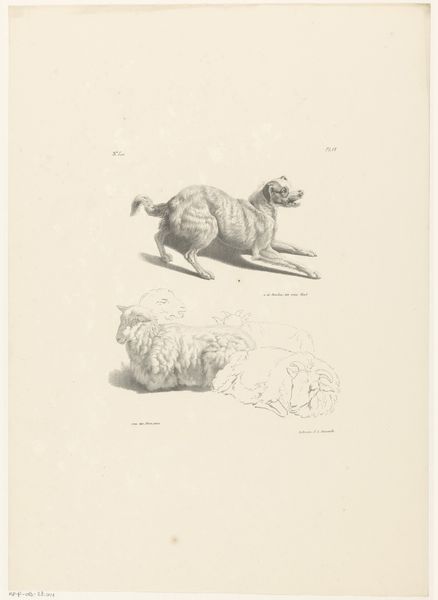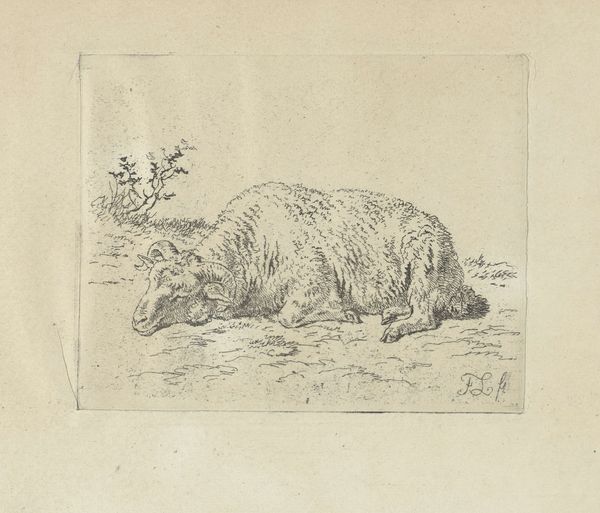
drawing, watercolor, graphite
#
drawing
#
landscape
#
figuration
#
watercolor
#
coloured pencil
#
underpainting
#
15_18th-century
#
graphite
#
watercolor
Copyright: Public Domain
Curator: Standing before us, we have "A guenon," a watercolour drawing found here at the Städel Museum by Tako Hajo Jelgersma. What catches your eye first? Editor: Those eyes! They're almost human, conveying such an intense awareness. The posture too; there’s a sense of captivity in the way it clutches the surface, a feeling reinforced by its pallid colouring. Curator: Interesting. Now, considering Jelgersma’s place in history, we must ask ourselves: What did the display of an exotic animal mean to 18th century European viewers? These representations served both scientific purposes and perpetuated notions of racial and colonial hierarchies. Editor: Precisely. The portrayal isn’t neutral, is it? This guenon, rendered with such detail, it speaks to a dynamic of power. Was Jelgersma subtly critiquing the exploitation of these creatures, or complicit in exoticizing the Other? How does it sit alongside Enlightenment fascination with the natural world and its impact on our contemporary understandings of animal rights and environmental exploitation? Curator: Exactly! These imported creatures, displayed in menageries, reflected the reach of empire and European dominance. Moreover, how did visual representations impact the popular understanding, and perhaps misunderstanding, of these animals? The watercolour allows Jelgersma to display minute details for the entertainment of others. Editor: It does feel somewhat melancholic. And while the execution shows scientific interest, I am still left wondering: what responsibility did Jelgersma have? And what, through this image, does society inherit? Curator: Ultimately, reflecting on this artwork invites contemplation of both our history and present, examining the complicated legacies inherent within scientific pursuit and its implications. Editor: Agreed, it reveals that even the most seemingly objective depictions are enmeshed in socio-political fabrics of their time. Food for thought.
Comments
No comments
Be the first to comment and join the conversation on the ultimate creative platform.
